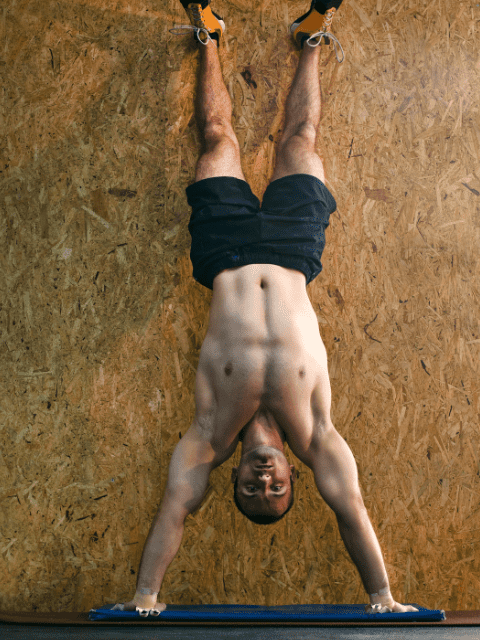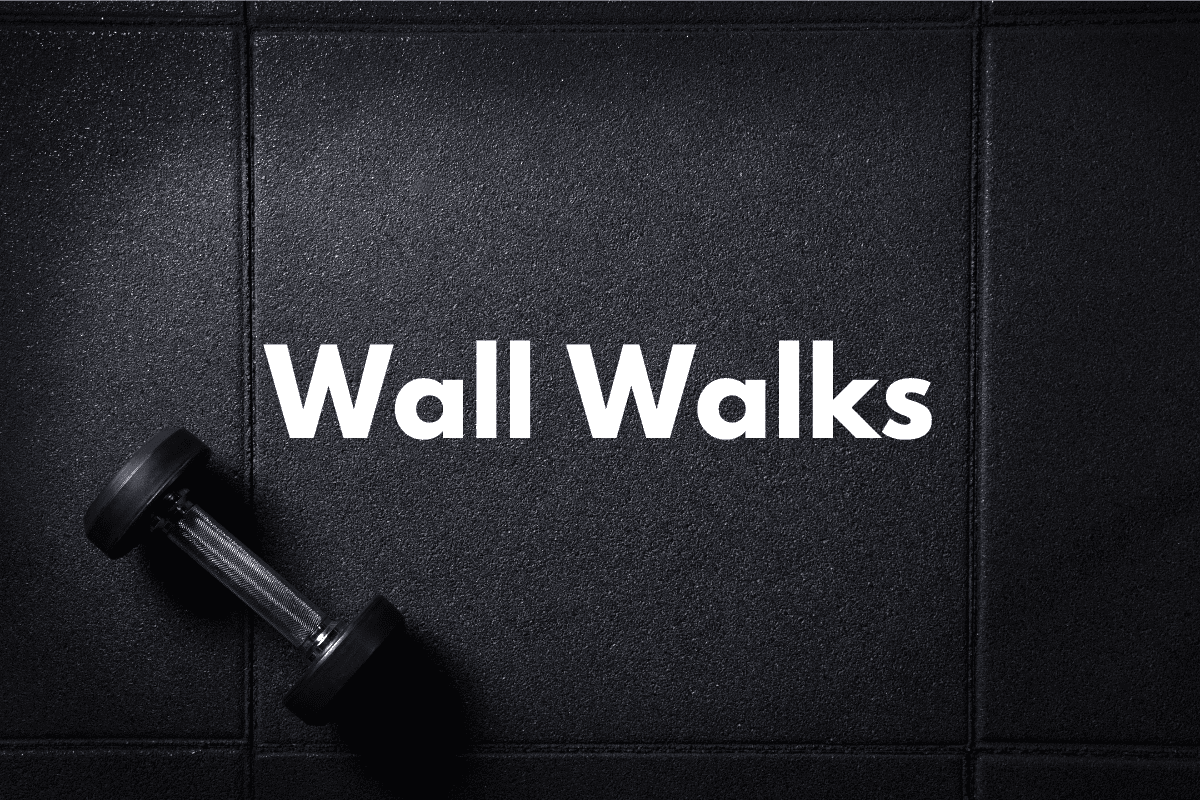Wall Walks (How To, Muscles Worked, Benefits)
Wall Walks are a challenging and effective exercise that requires you to move your body from a plank position to a handstand position against a wall. Not only do Wall Walks build upper body strength and shoulder stability, but they also improve balance, coordination, and body awareness.
However, it’s important to approach this exercise with caution, as it requires proper form and technique to prevent injury.
In this guide, I’m going to teach you the benefits of Wall Walks, how to perform them safely and effectively, and I’ll also give you a couple of alternatives in case you need them.
How To Do Wall Walks
Equipment Needed
- Solid wall to be able to “walk” on
Muscles Worked
- Shoulders
- Triceps
- Chest
- Core
- Upper Back and Lats
Step-by-Step Instructions
- Start in a plank position with your hands shoulder-width apart on the floor.
- Feet should be right next to the wall and the head furthest away from the wall.
- Slowly begin to walk your feet up the wall, one at a time, until your body is in a handstand position.
- Arms should stay straight as they walk toward the wall.
- Pause for a moment in the handstand position and then begin to walk your hands back away from the wall (feet walk back down the wall), lowering yourself down into a plank position.
- Repeat the movement for a desired number of reps or time.
Coaching Points
Keep your core engaged throughout the exercise to maintain a stable and straight body position.
Move slowly and deliberately, focusing on proper form and control – especially if you’re a beginner still getting familiar with the movement.
Benefits of Wall Walks
Wall Walks challenge almost every muscle in the upper body including the shoulders, triceps, chest, and upper back muscles, helping to increase overall upper body strength.
Wall Walks require the core muscles to be engaged throughout the movement to maintain a stable and straight body position, resulting in improved core strength and stability.
Moving from a plank position to a handstand position requires coordination, balance, and body awareness. Wall Walks can help improve these skills over time.
Wall Walk Alternatives
Want an alternative for Wall Walks? Here are a couple of alternatives – one easier and one more challenging – that you might be able to use as a replacement.
Pike Push-Ups
Pike push-ups are similar to wall walks in that they target the shoulders and upper body, but they don’t require a wall. Instead, they’re performed on the ground with the hips in a piked position. Pike push-ups are a great alternative for those who don’t have access to a wall or who may struggle with the balance component of wall walks.
Pro Tip: Start with your feet on the ground and hips in the air. As you get stronger try to start with your feet elevated onto a box.
Handstand Push-Ups

Handstand Push-Ups are a more challenging alternative to Wall Walks. In fact, many lifters will use Wall Walks as part of a progression working toward being able to do Handstand Push-ups.
For this exercise, start standing facing the wall, plant your hands on the ground and then flip your feet up onto the wall. From this position, lower yourself down toward the ground and then press back up to extension.
More Links and Info
Need a training program? Horton Barbell has programs ranging from Sports Performance programs to programs to get you ready for the beach. All our programs are written by Collegiate Strength and Conditioning Coaches. Visit Our Shop to check them out!
If you’d like to see more upper body exercises, check out the Upper Body Lifts section of our Exercise Library. There you’ll find dozens of chest, back and shoulder movements all with complete detailed instructions.

